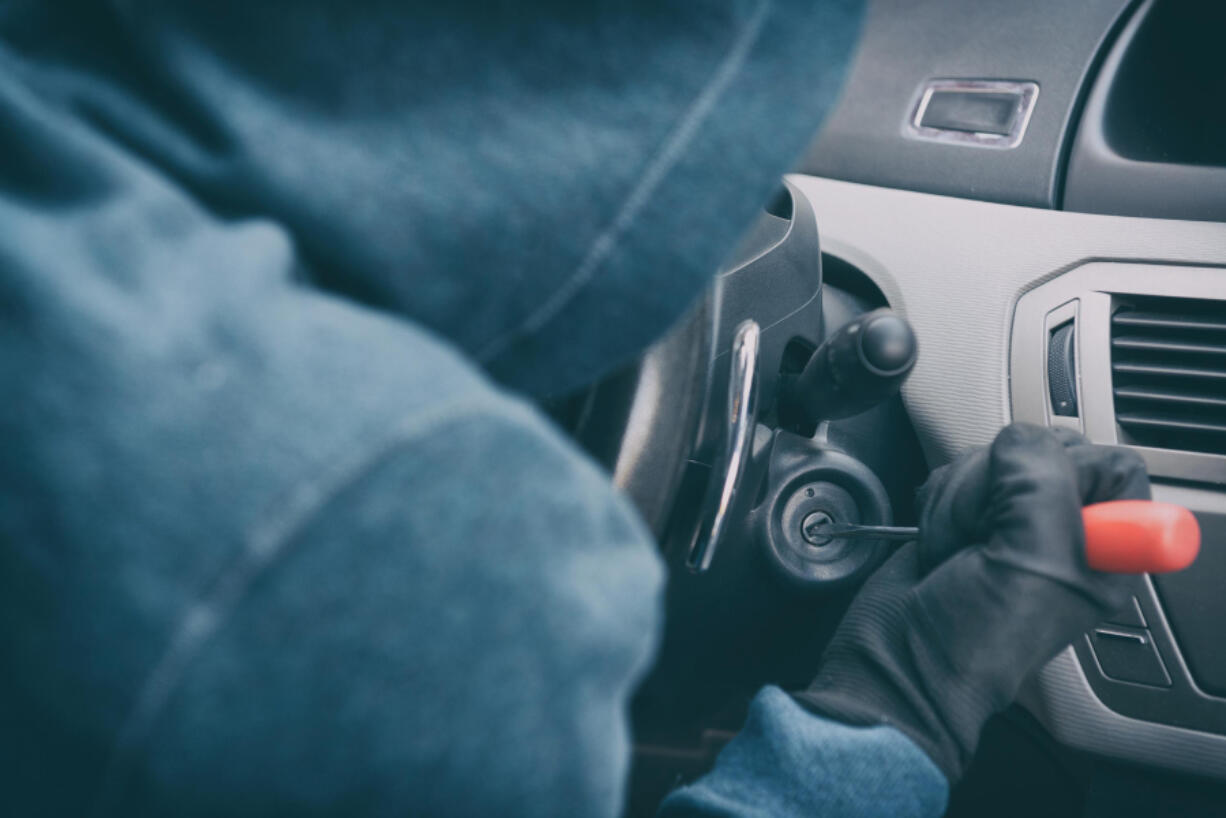Carjackings and car thefts are up significantly compared with the number of incidents before the pandemic, prompting fear and calls for action in many American cities.
Motor vehicle thefts increased by 29 percent in 2023 compared with the previous year, while carjackings slightly decreased by 5 percent in nearly 40 American cities, according to the Council on Criminal Justice’s most recent crime trends report. But between 2019 and 2023, car thefts and carjackings increased dramatically, by 105 percent and 93 percent, respectively, according to the report.
The five cities with the highest year-over-year increases in motor vehicle theft between 2022 and 2023 were Rochester, N.Y.; Baltimore; Buffalo, N.Y.; Charlotte, N.C.; and Cincinnati. The cities with the highest carjacking rates per 100,000 residents in 2023 were the District of Columbia; Baltimore; Memphis, Tenn.; Chicago; and Denver.
Many have blamed the surge in auto theft on a social media trend among teenagers that exposes vulnerabilities in certain kinds of cars, especially Kia and Hyundai models. But the varying reliability of motor vehicle theft data at different law enforcement levels and the scarcity of national carjacking data make it hard to determine what — or who — is responsible for the spikes.
As with many other crimes, there is limited FBI data on carjackings and motor vehicle thefts because law enforcement agencies differ in how they collect and submit their data. The federal Bureau of Justice Statistics also has not released any updated statistics on carjackings since October 2022, which tracked crimes committed through 2021. That poses a significant challenge for policymakers trying to allocate police resources to the communities that need them most.
“We certainly don’t want people flying blind making decisions with respect to public safety,” said Alex Piquero, a criminology professor at the University of Miami and the former director of the Bureau of Justice Statistics.
Anecdotal evidence on social media can heavily shape public perceptions of safety and crime, Ernesto Lopez, a research specialist at the Council on Criminal Justice, wrote in an email to Stateline.
Josh Rovner, the director of youth justice at The Sentencing Project, agreed that “the scraps of information that we have about youth involvement is very easy to overstate and misunderstand.”
Carjacking data, especially at the national level, is hard to come by. And despite the greater availability of motor vehicle theft data, its reliability varies across different law enforcement levels, with some local departments failing to submit their data to federal agencies and others not collecting the information at all.
“We need more local law enforcement agencies to produce that data — not just internally for their own community to report out to the community, but also for policy action,” Piquero said.
Since reaching its peak in the 1990s, overall crime in the United States has declined. In 2022, the most recent year with available data, there were 23.5 violent crimes for every 1,000 Americans aged 12 and older, according to the National Crime Victimization Survey.
The violent victimization rate increased by 42 percent in 2022 compared with 2021, but the past three decades have seen an overall decline.
Carjackings and motor vehicle thefts, however, are up compared with before the COVID-19 pandemic in 2020. It’s hard to say exactly what’s behind the surge, but some crime experts suggest that the economic turmoil during the pandemic, coupled with the relative ease of stealing cars or parts for financial gain, increased the attractiveness of car-related crime.
Carjackings are less common than auto thefts but more violent. In a carjacking the perpetrator directly confronts the vehicle’s owner, while auto theft typically occurs when a car is unoccupied. Motor vehicle theft includes stealing entire cars or specific parts such as tires, rims or catalytic converters. The difference between the two offenses is whether force is used to steal a car.
In the District of Columbia, the city’s police department recorded 958 carjackings last year but only made 173 arrests, according to the Metropolitan Police Department’s carjacking dashboard. Sixty-two percent of those suspects were under the age of 18.
Juveniles might be overrepresented in D.C.’s arrest numbers because they are easier to apprehend, or because they tend to commit crimes together, said Rovner, of The Sentencing Project.
Nationwide, the number of adults and juveniles arrested for motor vehicle theft has consistently declined since the 1980s, according to data from the federal Office of Juvenile Justice and Delinquency Prevention. Throughout the 1980s and 1990s, the juvenile arrest rate was about four times higher than adults, an analysis of federal data by the Council on Criminal Justice found. By 2020, the rates for adults and juveniles were about the same.
Misconceptions such as an overemphasis on the role juveniles play in carjackings and auto thefts can lead to misguided policies that may not enhance public safety and, in some cases, may exacerbate the situation, according to Josh Weber, deputy director in the corrections and reentry division of the Council of State Governments Justice Center, a think tank focused on breaking the cycle of incarceration.
“(These misconceptions) tend to lead to more reactionary and punitive policies rather than policies that are necessarily grounded in research and data,” said Weber, who also directs the center’s juvenile justice program.



